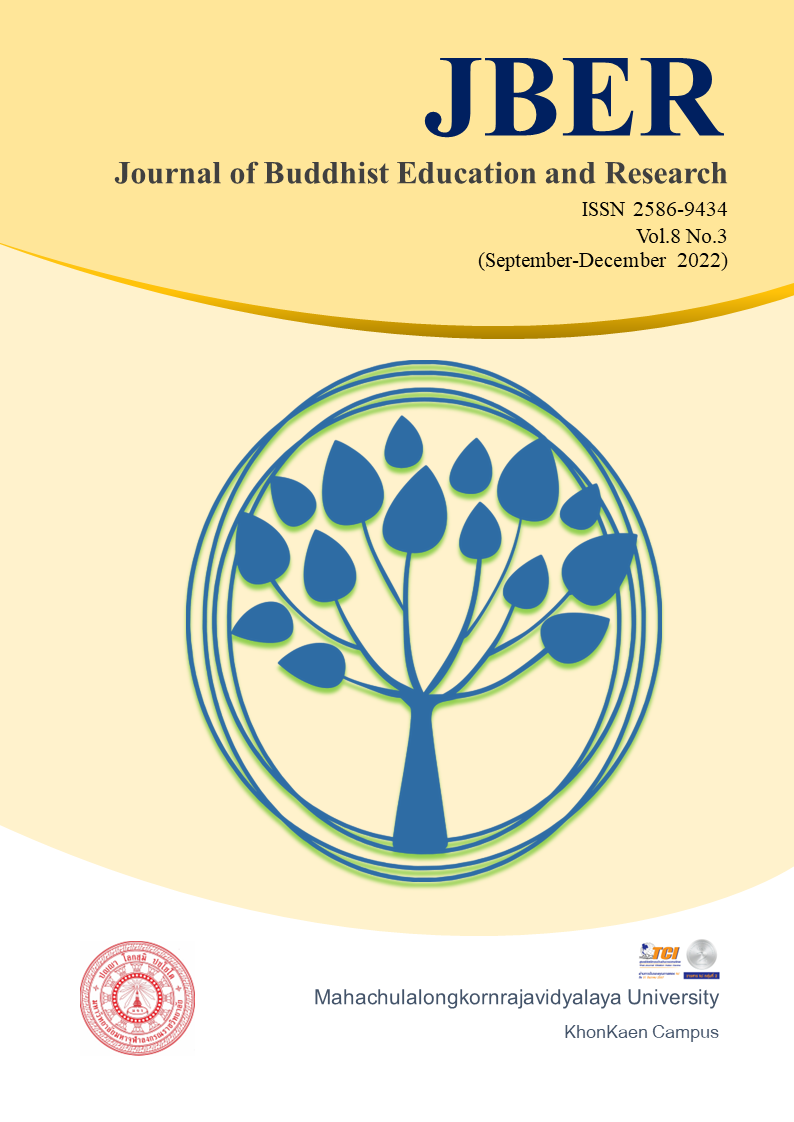A DEVELOPMENT OF LEARNING ACTIVITIES BY COGNITIVELY GUIDED INSTRUCTION (CGI) TO PROMOTE STATISTICAL LITERACY OF GRADE 5 STUDENTS
Keywords:
activities, cognitively guided instruction, statistical literacyAbstract
This independent study aims to (1) onstruct and evaluate the Effectiveness index of using cognitively guided instruction (CGI) for encouraging statistical literacy of grade 5 students and 2) to experiment on cognitively guided instruction (CGI) with learning activities. The study has been conducted by 2 steps research methodology and development. A sample group was twelve grade 5 students who were studying during semester 2 academic year, 2020 at Banpaiyai school, Phichit Province that were chosen by Cluster sampling. The research tools used consisted of 1) learning activities with cognitively guided instruction (CGI) 2) the measurement test of statistical literacy. The data were analyzed by using mean, standard deviation, and t-test dependent. The results revealed that
- The learning activities with cognitively guided instruction (CGI) had 4 steps; 1) Problem presentation step 2) to analyze and resolve the problem 3) to report the result and problem solving 4) to discuss and problem solving. The result of this study had appropriate and high quality ( = 4.88, S.D. = 0.13) and the lesson plan had appropriate and highest quality. ( = 4.95, S.D.= 0.08). The Effectiveness Index was at 0.52
- The result of using cognitively guided instruction (CGI) learning activities were as Ability of statistical literacy with cognitively guided instruction (CGI) by learning activities indicated that the student had ability of statistical literacy after studying with cognitively guided instruction was higher than that before that learning at .05 level of significance.
References
บุญชม ศรีสะอาด. (2545). การวิจัยเบื้องต้น. พิมพ์ครั้งที่ 7. กรุงเทพฯ : สุวีริยาสาส์น.
เผชิญ กิจระการและสมนึก ภัททิยธนี.(2545). ดัชนีประสิทธิผล. วารสารการวัดผลการศึกษา มหาวิทยาลัยมหาสารคาม. 8 (กรกฎาคม 2545), 30 – 36.
สถาบันส่งเสริมการสอนวิทยาศาสตร์และเทคโนโลยี. (2555). ทักษะและกระบวนการทางคณิตศาสตร์. กรุงเทพฯ: 3 คิว มีเดีย.
อัมพร ม้าคนอง. (2553). ทักษะและกระบวนการทางคณิตศาสตร์ การพัฒนาเพื่อพัฒนาการ. กรุงเทพฯ: ศูนย์ตำราและเอกสารทางวิชาการ คณะครุศาสตร์ จุฬาลงกรณ์มหาวิทยาลัย.
Carpenter, T. P., Fennema, E., Peterson, P. L., Chiang, C.-P., & Loef, M. (1999). Using Knowledge of Children’s Mathematics Thinking in Classroom Teaching: An Experimental Study. American educational research journal, 26(4), 499-531.
Ben-Zvi, D., and A. Friedlander. (2004). Statistical Thinking in A Technological Environment. In J. Garfield and G. Burrill (Eds.), Research on The Role of Technology in Teaching andLearning Statistics. Voorburg, The Netherlands: International Statistical Institute.
Carpenter, T. P., & Fennema, E. (1988). Research and Cognitively Guided Instruction. Integrating research on teaching and learning mathematics, 2-19
Chick, H. and Pierce, R. (2011). Teaching for statistical literacy utilising affordances in real-world data. International Journal of Science and Mathematics Education, 10, 339-362.
Gal, I. (2002). Adult statistical literacy: Meanings, components, responsibilities. International Statistical Review, 70(1), 1-25.
Gal, I., & Murray, S.T. (in press). Preparing for diversity in users' statistical literacy and information needs: Institutional and educational implications. Statistical Journal of the International Association for Official Statistics.
Schield, M. (2010). Assessing statistical literacy: take CARE. Assessment methods in statistical education: an international perspective, 133-152.





